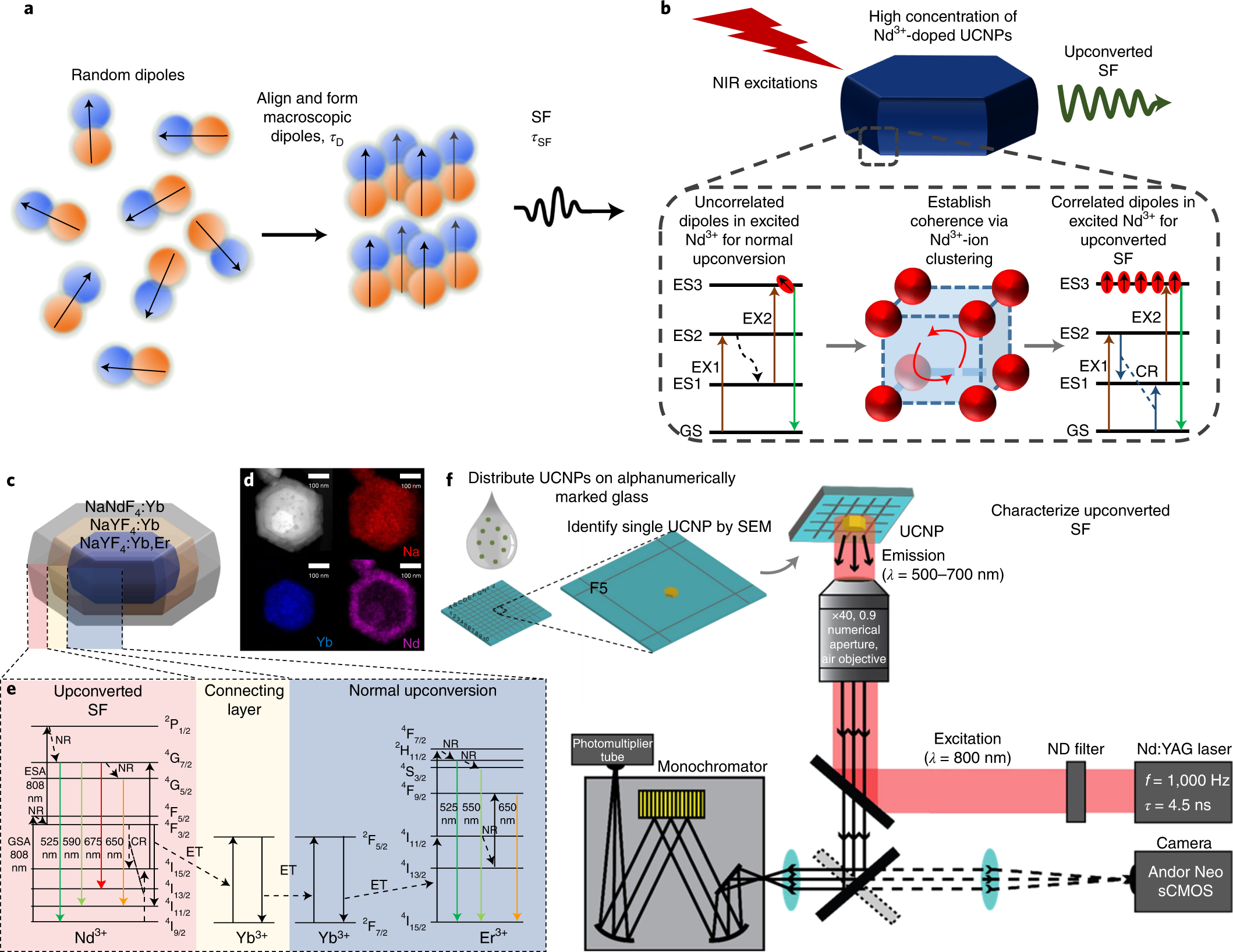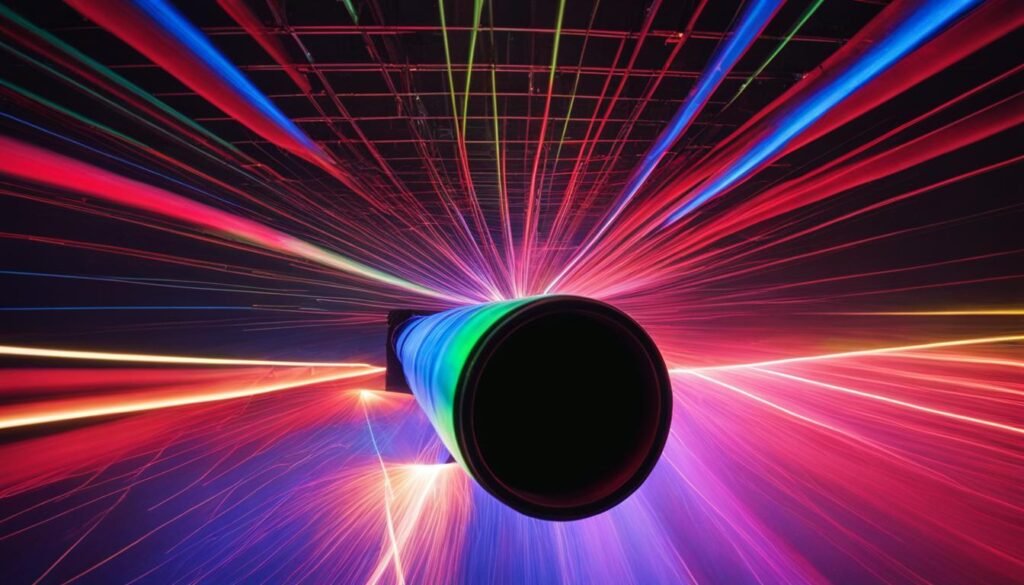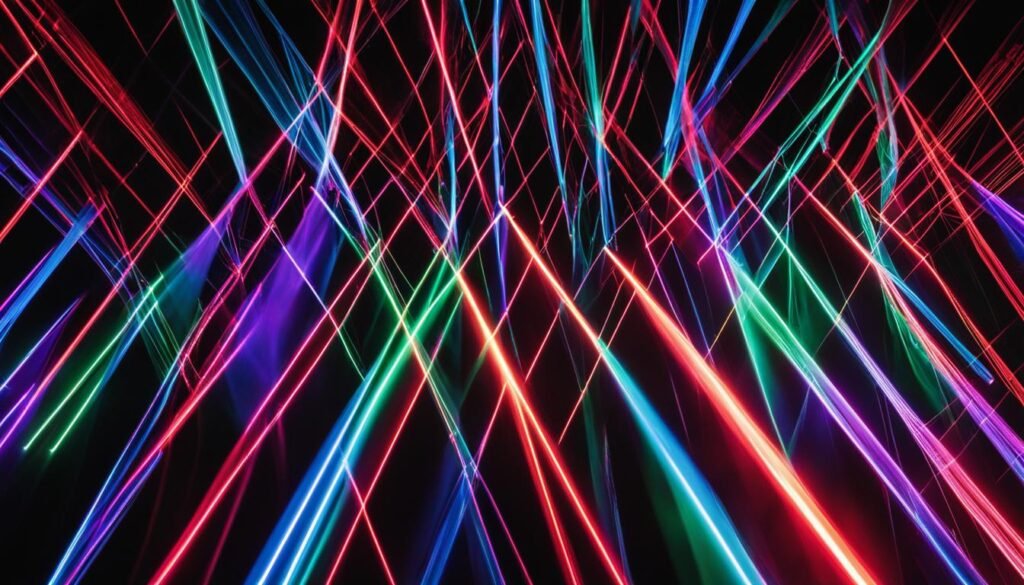Contents

Source: De Gruyter
Understanding Superfluorescence in Quantum Optics
Introduction to Superfluorescence
Superfluorescence is a fascinating phenomenon within the field of quantum optics, involving the collective emission of light by an ensemble of excited atoms or ions. At the onset, these atoms or ions are excited incoherently, typically through optical pumping, resulting in no macroscopic dipole moment. The process is initiated by spontaneous emission, gradually leading to the synchronization of radiation phases across different atoms. This synchronization results in the release of stored energy as a superfluorescent pulse, characterized by a delayed pulse maximum and a duration shorter than the upper-state lifetime of a single atom. The intensity of the emitted light increases proportionally to the square of the number of atoms involved.
Distinguishing Superfluorescence from Superradiance
It is crucial to differentiate between superfluorescence and superradiance, as these terms are often mistakenly used interchangeably. In superradiance, a macroscopic dipole moment is present from the beginning, created during the excitation process by a light pulse that ensures uniform intensity and consistent behavior among the atoms. This distinction highlights the unique nature of superfluorescence, where synchronization emerges as a result of the emission process rather than initial conditions.
Superfluorescence vs. Superluminescence
Another related phenomenon is superluminescence, also known as amplified spontaneous emission (ASE). Unlike superfluorescence, superluminescence does not require close proximity or coherent excitation and is driven by fluorescence and stimulated emission. The processes of superfluorescence and superluminescence can compete under certain conditions, such as varying dephasing rates within the atomic system. In many laser amplifiers, rapid dephasing prevents the occurrence of superfluorescence.
The Challenges in Defining Superfluorescence
The term “superfluorescence” lacks a universally accepted definition, leading to varied interpretations in scientific literature. In some contexts, “superfluorescent source” is used synonymously with “superluminescent source,” although these terms refer to distinct phenomena. This ambiguity underscores the importance of precise terminology in scientific discourse.
Conclusion
Superfluorescence represents a unique and intriguing aspect of quantum optics, distinguished by its collective emission process and the synchronization of atomic phases. Understanding its differences from related phenomena like superradiance and superluminescence is essential for advancing research and applications in this field. As the scientific community continues to explore these phenomena, clear definitions and distinctions will be vital for fostering a deeper understanding of quantum optical processes.

This document provides an informative overview of superfluorescence, distinguishing it from similar phenomena, and discussing the challenges in defining it within the field of quantum optics. The content is structured with headings and subheadings for clarity, and an image from Wikipedia is included to visually represent the topic.

Source: Nature
Feel free to comment your thoughts.



